Ever stared at a wall of monitors at a tech store and felt completely lost? I’ve been there. The endless acronyms—LCD, LED, OLED, IPS, TN, VA—start to sound like alphabet soup after a while. But here’s the thing: the monitor you choose can make or break your entire digital experience, whether you’re fragging enemies in Valorant, color-correcting a photoshoot, or just doom-scrolling through TikTok at 3 AM.
As someone who’s cycled through more monitors than I care to admit (my wallet is still recovering), I’ve learned that understanding the different types of monitors isn’t just for tech geeks—it’s essential knowledge for anyone who spends hours glued to a screen. And let’s be honest, that’s most of us these days.
So, let’s cut through the jargon and break down everything you need to know about monitor types in 2025. Whether you’re upgrading your gaming setup, building a content creation workstation, or just trying to figure out why your current monitor makes your eyes feel like they’re being stabbed with tiny digital daggers, I’ve got you covered.
Understanding Monitor type Technologies
Before diving into specific panel types, let’s get a handle on the basic technologies that power modern displays. Think of this as your monitor technology 101 crash course.
LCD Monitors: The Reliable Veterans
LCD (Liquid Crystal Display) monitors were the first major technology to dethrone the bulky CRT monitors of yesteryear. They work by using liquid crystals that twist and bend when electricity is applied, controlling how much light passes through from a backlight behind the screen.

The Lowdown on LCD:
- Still widely used as the underlying technology in many modern monitors
- Require a backlight (usually CCFL in older models)
- Generally more affordable than newer technologies
- Decent color reproduction but not as vibrant as newer options
- Moderate power consumption compared to older CRT monitors
LCD monitors represented a huge leap forward when they first appeared, but they’re now typically enhanced with LED backlighting (which we’ll get to next) rather than sold as pure “LCD” monitors.
LED Monitors: LCD’s Glow-Up
Despite what marketing might suggest, LED (Light-Emitting Diode) monitors aren’t actually a completely different technology from LCD—they’re LCD monitors with LED backlighting instead of the older CCFL (Cold Cathode Fluorescent Lamp) backlighting.

Why LED Backlighting Levels Up LCD:
- More energy-efficient than CCFL backlights
- Thinner, sleeker designs possible
- Better contrast ratios and brightness
- Longer lifespan than CCFL-backlit LCDs
- Less environmental impact due to absence of mercury
When you see a monitor marketed as an “LED monitor,” just remember it’s essentially an LCD monitor with LED backlighting. Marketing, am I right?
OLED Monitors: The Premium Experience
OLED (Organic Light-Emitting Diode) represents a genuine technological leap. Unlike LCD/LED monitors, OLED doesn’t need a backlight because each pixel emits its own light.

What Makes OLED Special:
- Perfect blacks (pixels can turn completely off)
- Infinite contrast ratio (the holy grail of display tech)
- Incredibly fast response times (great for gaming)
- Wider viewing angles without color shifting
- Thinner and potentially flexible display designs
- Vivid, accurate colors that pop off the screen
The downside? That premium experience comes with a premium price tag. OLED monitors are significantly more expensive than their LCD/LED counterparts, though prices have been gradually coming down.
QD-OLED: The New Kid on the Block
QD-OLED (Quantum Dot OLED) is the newest display technology to hit the market, combining the best aspects of quantum dot technology with OLED.
What Makes QD-OLED Worth Watching:
- Even better color volume than standard OLED
- Higher brightness levels while maintaining OLED’s perfect blacks
- Particularly excels at HDR content with its wider color gamut
- Lower risk of burn-in than traditional OLED
Products like the MSI MPG 321URX QD-OLED represent this cutting-edge technology, offering a stunning visual experience for both gaming and creative work.
CRT Monitors: The Nostalgic Dinosaurs
CRT (Cathode Ray Tube) monitors are the bulky behemoths that dominated desks until the early 2000s. They work by shooting electrons at a phosphorescent screen.
Why CRTs Are (Mostly) History:
- Enormous size and weight compared to modern displays
- High power consumption
- Limited resolution by today’s standards
- Prone to screen flicker that caused eye strain
However, they do have some niche advantages that keep a small community of enthusiasts and retro gamers hanging onto them:
- Zero input lag (crucial for competitive retro gaming)
- Perfect motion clarity without blur
- Deep blacks and good contrast ratios
Plasma Monitors: The Forgotten Middle Child
Plasma displays had their moment in the sun, primarily in the TV market rather than computer monitors. They use small cells containing electrically charged ionized gases to create images.
Why Plasma Faded Away:
- High power consumption
- Heavy weight compared to LCD
- Burn-in issues with static images
- Heat generation during operation
- Manufacturing costs eventually couldn’t compete with improving LCD technology
By 2014, most major manufacturers had discontinued plasma production, making them rare finds in 2025.
The Panel Types: Where the Real Differences Emerge
Now that we’ve covered the basic display technologies, let’s dive deeper into panel types—the variations within LCD/LED technology that create significant differences in performance and suitability for different uses.
IPS Panels: The Color Champions
IPS (In-Plane Switching) panels have become the go-to choice for creative professionals and anyone who values color accuracy and viewing angles.
Why IPS Panels Shine:
- Exceptional color accuracy and reproduction
- Wide viewing angles (typically 178° both horizontally and vertically)
- Consistent colors even when viewed from angles
- Better color depth than other LCD panel types
- Minimal color shifting across the screen
Where IPS Falls Short:
- Higher response times than TN panels (though this gap has narrowed)
- Typically more expensive than TN panels
- Lower contrast ratios than VA panels
- IPS glow in dark scenes (a glow visible in dark content, especially in corners)
Best For: Graphic design, photo editing, video editing, web development, and general use where color accuracy matters.
Current Standout Example: The BenQ PD2725U offers incredible color accuracy with its 27-inch 4K IPS panel, making it perfect for creative professionals.
TN Panels: The Speed Demons
TN (Twisted Nematic) panels prioritize speed and responsiveness over color accuracy and viewing angles, making them the traditional choice for competitive gamers.
Why TN Panels Race Ahead:
- Fastest response times (some new models reaching an incredible 600Hz refresh rate)
- Minimal motion blur during fast-paced action
- Lower input lag than other panel types
- Budget-friendly options available
- Higher brightness than older IPS panels
Where TN Panels Lag Behind:
- Limited viewing angles (colors shift when not viewed head-on)
- Poorer color reproduction than IPS or VA panels
- Less accurate color representation for creative work
- Weaker contrast ratios compared to VA panels
Best For: Competitive gaming, especially fast-paced esports titles like Counter-Strike, Valorant, or fighting games where every millisecond counts.
Current Standout Example: The BenQ ZOWIE XL2586X+ with its mind-boggling 600Hz refresh rate and 24.1-inch TN panel is basically the Formula One car of gaming monitors.
VA Panels: The Contrast Kings
VA (Vertical Alignment) panels sit somewhere between IPS and TN in performance, but excel specifically at contrast ratio and black levels.
Why VA Panels Stand Out:
- Superior contrast ratios (typically 3000:1 or higher, compared to 1000:1 for IPS)
- Deep, rich blacks that approach OLED quality
- Better color reproduction than TN panels
- Good viewing angles (not as good as IPS, but better than TN)
- Less IPS glow in dark scenes
Where VA Panels Fall Behind:
- Slower response times than both TN and modern IPS panels
- Color shifting at extreme angles (though less than TN)
- “VA smearing” during fast motion (dark smears in high-contrast transitions)
- Less color accuracy than IPS for professional work
Best For: Media consumption, HDR content, casual gaming, and users who prioritize deep blacks for movies or atmospheric games.
Current Standout Example: The Samsung Odyssey 3D G90XF showcases VA technology with its incredible contrast ratio and immersive glasses-free 3D experience.
Specialized Monitor Types: Beyond the Basics
Beyond the core panel technologies, several specialized monitor formats have emerged to serve specific needs or create unique experiences.
Curved Monitors: Embracing the Bend
Curved monitors use the same panel technologies we’ve covered (IPS, VA, TN) but add a physical curve to the display surface.
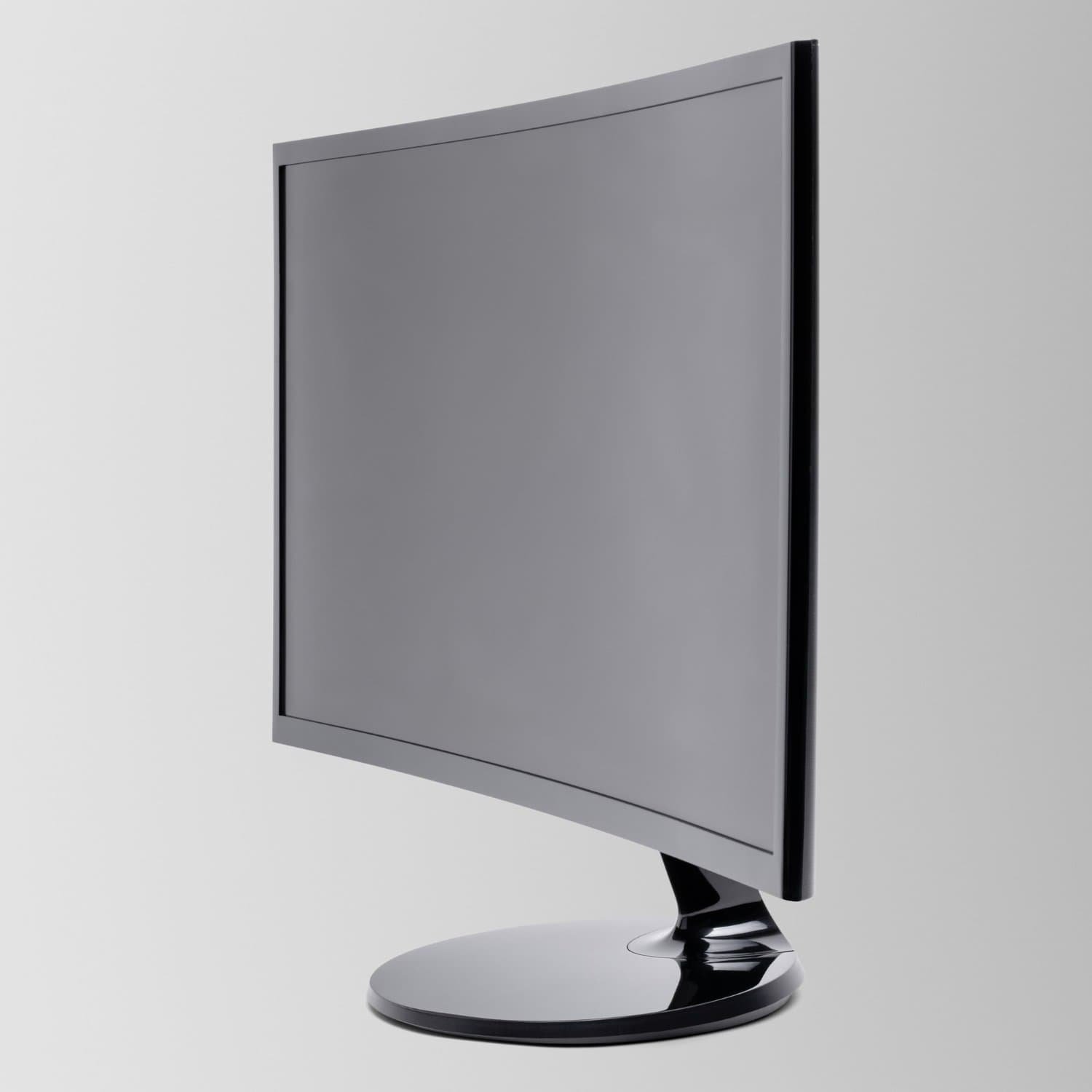
The Curve Appeal:
- Reduced eye strain for some users (matches the natural curvature of the eye)
- More consistent viewing distances across the entire screen
- More immersive viewing experience by filling more of your peripheral vision
- Reduced glare from certain angles
The Curved Drawbacks:
- Not ideal for professional design work requiring precise straight lines
- Wall mounting can look awkward due to the gap between the wall and the edges
- More expensive than flat counterparts with similar specs
- Subjective experience (some people simply prefer flat screens)
Ultrawide Monitors: Embracing the Landscape
Ultrawide monitors feature aspect ratios wider than the standard 16:9, typically 21:9 or even 32:9 (super ultrawide).
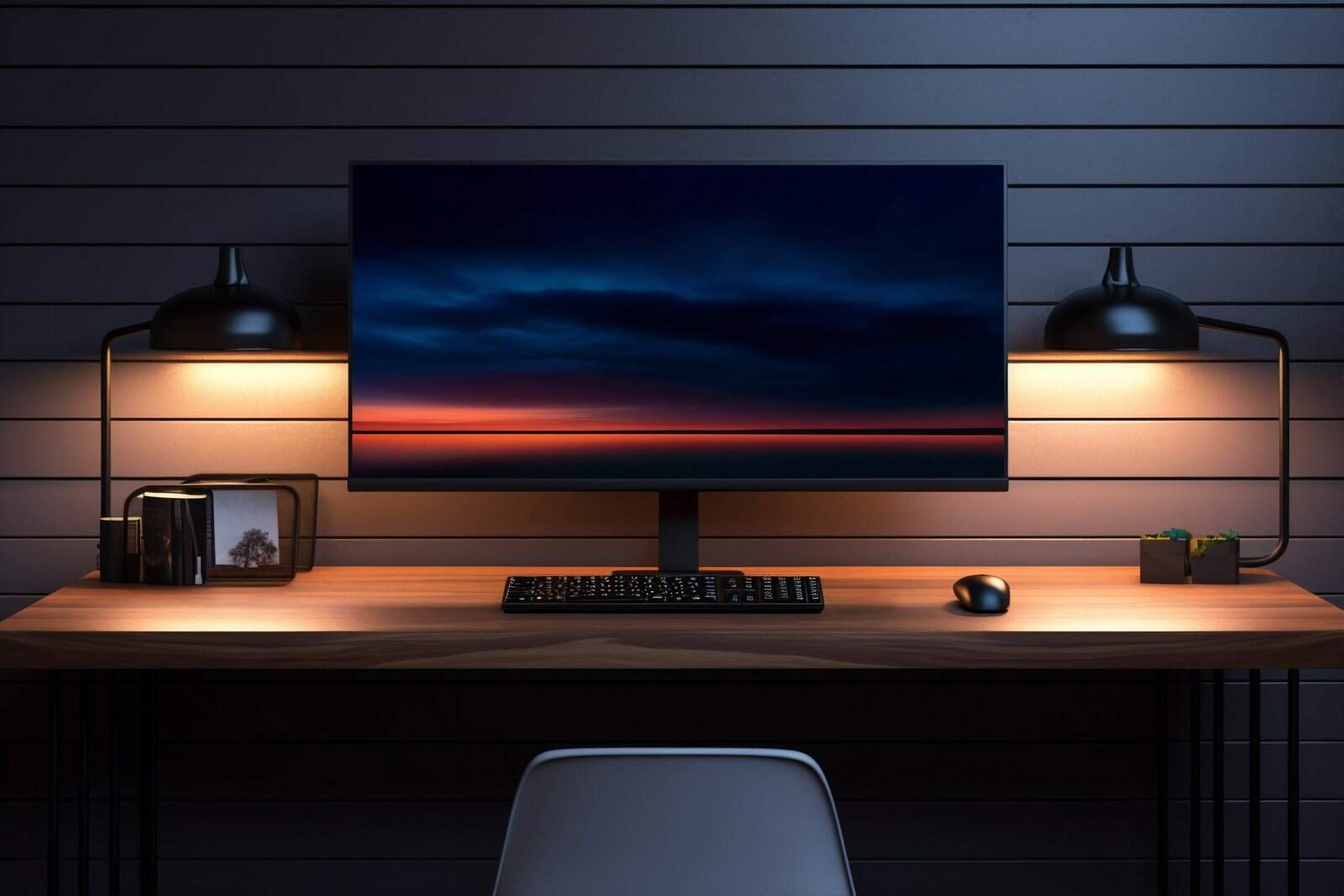
Why Go Wide:
- Immersive gaming experience with expanded field of view
- Productivity boosts from additional horizontal workspace
- Cinematic movie viewing (most films are shot in wider aspect ratios)
- Reduced need for multiple monitors for multitasking
- Cleaner desk setup with fewer bezels and cables
The Ultrawide Considerations:
- Not all games fully support ultrawide resolutions
- Higher GPU requirements due to increased pixel count
- Desk space requirements for these wider displays
- Higher price point than standard width monitors
Current Standout Example: The Alienware AW3423DW combines QD-OLED technology with a 34-inch ultrawide format for an unmatched gaming and multitasking experience.
Gaming Monitors: Optimized for Play
Gaming monitors are designed specifically with features that enhance the gaming experience, regardless of the underlying panel technology.
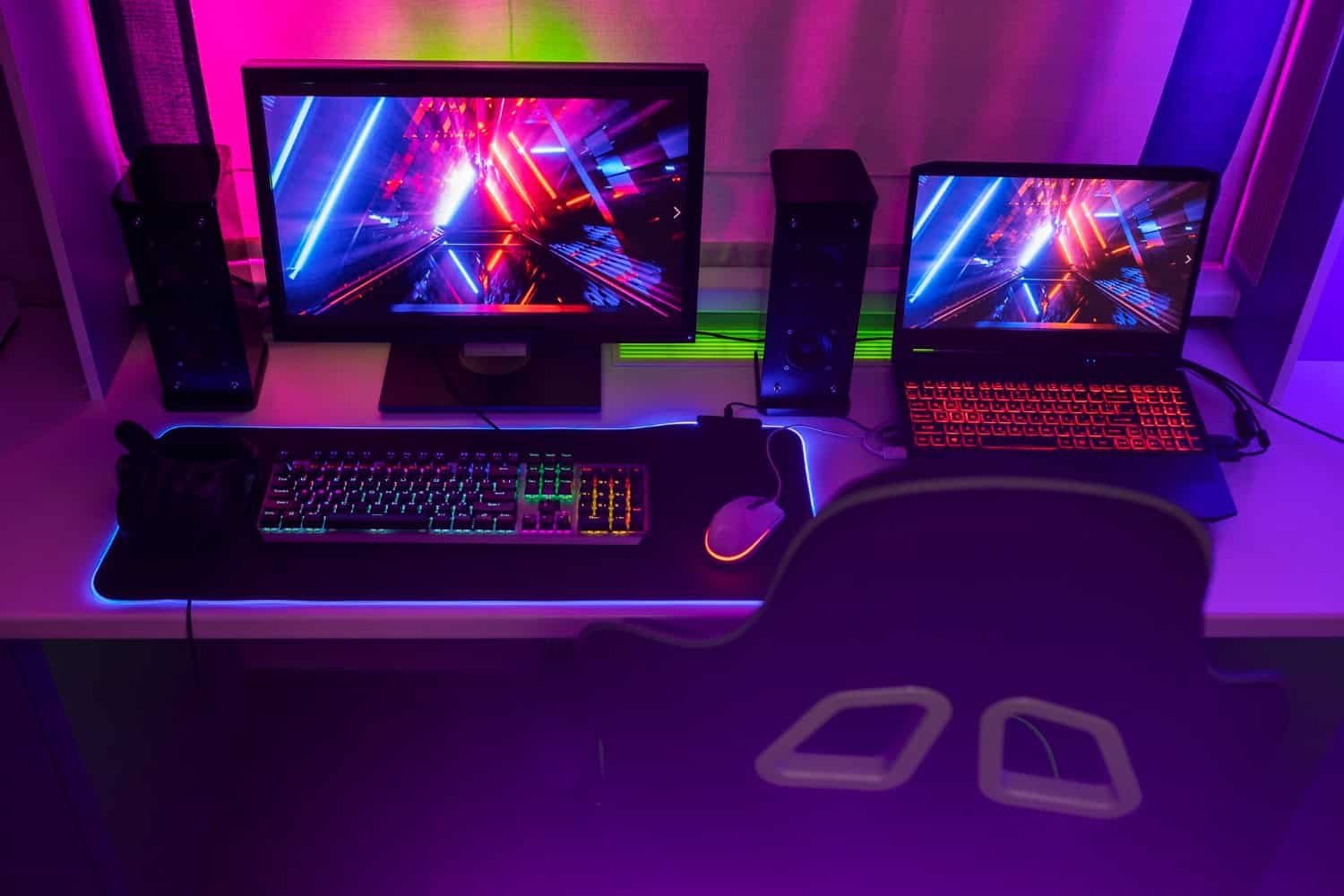
Gaming-Specific Features:
- High refresh rates (120Hz, 144Hz, 240Hz, and now even 600Hz)
- Adaptive sync technologies (G-Sync or FreeSync to eliminate screen tearing)
- Low input lag prioritized in the design
- Motion blur reduction features
- Gaming-oriented HDR implementations
- Gamer aesthetic with RGB lighting and bold designs
Current Standout Example: The ASUS ROG Swift PG27UCDM combines OLED technology with gaming-specific features like a 240Hz refresh rate for a premium gaming experience.
Professional/Creative Monitors: Color Is King
Monitors designed for creative professionals prioritize color accuracy, calibration features, and consistent performance.
- Wide color gamut coverage (Adobe RGB, DCI-P3, etc.)
- Hardware calibration support
- Color uniformity across the screen
- Factory calibration certificates (on higher-end models)
- Reliable color consistency over time
- Specialized color modes for different creative workflows
Pro-Level Features:
Current Standout Example: The BenQ SW321C PhotoVue with its 32-inch IPS panel covers 99% of the Adobe RGB color space and includes features specifically designed for photographers and video editors.
Monitor Resolutions: The Pixel Perspective
Resolution isn’t tied to any specific monitor type—you can find various resolutions across different panel technologies. However, understanding resolution is crucial to making an informed monitor choice.

Common Resolutions Explained
Full HD (1920×1080):
- Still the most common resolution
- Good for entry-level gaming and general use
- Easier for GPUs to drive at high refresh rates
- Most affordable option
QHD/2K (2560×1440):
- Sweet spot for many users
- Balances sharpness and performance
- Good for mid-range gaming and productivity
- Increasingly common in 27-inch monitors
4K (3840×2160):
- Ultra-sharp image quality
- Ideal for content creation and media consumption
- Requires more powerful GPUs for gaming
- Common in larger monitors (27-inch and above)
5K (5120×2880) and Higher:
- Premium resolution for professional work
- Extremely detailed image quality
- Requires very powerful hardware to drive
- Typically found in professional-grade monitors
Ultrawide Resolutions:
- 3440×1440 (21:9 QHD ultrawide)
- 3840×1600 (21:9 near-4K ultrawide)
- 5120×1440 (32:9 super ultrawide)
Making the Right Choice: Matching Monitor Types to Use Cases
With so many options, how do you choose? Here’s a simplified guide based on your primary use case:
For Gaming
Competitive/Esports Gaming:
- Best Panel Type: TN or fast IPS
- Key Features to Prioritize: Ultra-high refresh rate (240Hz+), lowest possible response time, adaptive sync
- Resolution: 1080p or 1440p (easier to maintain high frame rates)
- Top Pick: BenQ ZOWIE XL2586X+ (TN, 600Hz) for pure competitive play
Immersive/Visual Gaming:
- Best Panel Type: IPS, VA, or OLED
- Key Features to Prioritize: HDR, wide color gamut, decent refresh rate (144Hz+)
- Resolution: 1440p or 4K depending on your GPU power
- Top Pick: MSI MPG 321URX QD-OLED for stunning visuals with good performance
Racing/Flight Sim Gaming:
- Best Panel Type: VA or IPS
- Form Factor: Curved ultrawide for immersion
- Resolution: 3440×1440 or higher
- Top Pick: Alienware AW3423DW (QD-OLED ultrawide)
For Creative Work
Photo Editing:
- Best Panel Type: IPS or OLED
- Key Features to Prioritize: Color accuracy, wide gamut coverage, calibration features
- Resolution: 4K or higher preferred
- Top Pick: BenQ SW321C PhotoVue
Video Editing:
- Best Panel Type: IPS or OLED
- Key Features to Prioritize: Color accuracy, resolution for timeline space
- Resolution: 4K minimum
- Top Pick: Apple Studio Display (for Mac users) or BenQ PD2725U
Graphic Design:
- Best Panel Type: IPS
- Key Features to Prioritize: Color accuracy, calibration options
- Resolution: 4K preferred
- Top Pick: ASUS ProArt PA32UCE with hardware calibration
For Office/Productivity
General Office Work:
- Best Panel Type: IPS
- Key Features to Prioritize: Ergonomic stand, eye-care features, connectivity
- Resolution: 1440p or 4K
- Top Pick: Dell U2725QE with versatile connectivity options
Programming/Development:
- Best Panel Type: IPS
- Key Features to Prioritize: Screen real estate, text clarity
- Resolution: 4K or ultrawide
- Top Pick: Dell U3225QE (4K) or an ultrawide option
Financial/Data Work:
- Best Panel Type: IPS
- Form Factor: Consider dual monitors or ultrawide
- Resolution: 1440p or higher
- Top Pick: Any high-quality IPS monitor with good ergonomics
For Entertainment/Media
Movie Watching:
- Best Panel Type: OLED or VA
- Key Features to Prioritize: Contrast ratio, HDR, color accuracy
- Resolution: 4K
- Top Pick: Any OLED monitor or high-end VA panel
All-in-One Entertainment:
- Best Panel Type: VA or IPS
- Key Features to Prioritize: Smart features, good speakers
- Resolution: 4K
- Top Pick: Samsung Smart Monitor M9 with built-in streaming apps
Frequently Asked Questions About Monitor Types
What are the main types of computer monitors available today?
The main types of computer monitors available today are LED-backlit LCD monitors (which include IPS, TN, and VA panel variations), OLED monitors, and the newer QD-OLED monitors. Each type has different panel technologies that affect performance characteristics like color accuracy, response time, and contrast ratio. CRT and plasma monitors exist but are now essentially obsolete for modern computing.
What is the difference between LCD, LED, and OLED monitors?
The key differences between these monitor types are:
- LCD monitors use liquid crystal displays with CCFL (fluorescent) backlighting
- LED monitors are actually LCD monitors that use LED backlighting instead of CCFL, offering better energy efficiency and thinner designs
- OLED monitors use organic compounds that emit light when electricity is applied, requiring no backlight, which allows for perfect blacks and infinite contrast ratios
Think of it this way: LED monitors are just a subtype of LCD monitors with improved backlighting, while OLED represents a fundamentally different technology.
What are CRT and plasma monitors, and are they still used?
CRT (Cathode Ray Tube) monitors were the bulky, heavy monitors that dominated before flat panels. They used electron guns to illuminate phosphors on a glass screen. Plasma monitors used tiny cells filled with gas that created light when charged with electricity.
Neither is commonly used today. CRT production has largely ceased, though some exist in niche markets like competitive retro gaming or certain scientific applications where their zero input lag is valued. Plasma monitor production ended around 2014, making them increasingly rare.
How do IPS, TN, and VA panel types differ in monitors?
These three panel types represent different LCD technologies, each with distinct advantages:
IPS (In-Plane Switching):
- Best color accuracy and viewing angles
- Moderate response times (typically 1-5ms)
- Good for creative work and general use
TN (Twisted Nematic):
- Fastest response times (down to 0.5ms)
- Highest refresh rates (now reaching 600Hz)
- Limited viewing angles and color reproduction
- Best for competitive gaming
VA (Vertical Alignment):
- Best contrast ratios among LCD panels (typically 3000:1+)
- Good color reproduction (better than TN, not as good as IPS)
- Slower response times can cause smearing in fast motion
- Great for movie watching and general use
Which monitor type is best for gaming, design, or office work?
The best monitor type depends on your specific needs:
For Gaming:
- Competitive gaming: TN panels for highest refresh rates and lowest response times
- Visual gaming: IPS or OLED for better colors and contrast
- Balanced gaming: Fast IPS panels (combining good response times with better colors)
For Design:
- IPS panels are generally best for color-critical work
- OLED can be excellent but has burn-in concerns for static elements
- Professional-grade models with wide color gamut coverage and calibration features
For Office Work:
- IPS panels offer the best viewing angles and color consistency
- Consider ergonomic features and eye care technologies over panel type
- Higher resolution often matters more than panel type for productivity
What are the advantages and disadvantages of OLED monitors?
OLED Advantages:
- Perfect blacks and infinite contrast ratio
- Exceptional color reproduction
- Wide viewing angles without color shift
- Ultra-fast response times (0.1ms)
- No backlight bleed issues
- Thinner designs possible
OLED Disadvantages:
- Higher cost than LCD/LED alternatives
- Potential for burn-in with static images
- Lower peak brightness than some high-end LED-backlit displays
- Shorter lifespan than LCD panels
- Can appear grainy in some solid colors due to subpixel structure
Are curved and ultrawide monitors considered a different type?
Curved and ultrawide monitors aren’t separate panel technologies but rather form factors that can utilize any panel type (IPS, VA, TN, or OLED). The curve is a physical characteristic of the monitor’s construction, while ultrawide refers to the aspect ratio (typically 21:9 or 32:9 instead of the standard 16:9).
These monitors can provide more immersive experiences and improved productivity but come with their own considerations regarding desk space, compatibility with software, and price premiums.
How does monitor resolution (1080p, 4K, etc.) relate to monitor type?
Resolution is independent of monitor type or panel technology. You can find 1080p (Full HD), 1440p (QHD), 4K, and other resolutions across all panel types—IPS, TN, VA, and OLED.
That said, certain combinations are more common:
- Budget 1080p monitors often use TN panels
- Mid-range 1440p gaming monitors frequently use fast IPS or VA panels
- Premium 4K monitors usually feature IPS or OLED panels
The resolution you choose should be based on your use case, viewing distance, and the power of your graphics card, rather than being tied to panel type.
What should I consider when choosing between different monitor types?
When choosing a monitor, consider these factors:
- Primary use case (gaming, content creation, office work, etc.)
- Budget constraints
- Performance priorities (color accuracy, speed, contrast)
- Desk space and setup (ultrawide vs. dual monitors, etc.)
- Your hardware capabilities (can your GPU handle the resolution?)
- Color accuracy requirements
- Future-proofing needs
- Special features (HDR support, adaptive sync, USB-C connectivity)
The best monitor is ultimately the one that meets your specific needs rather than what’s technically “best” overall.
Are there energy efficiency or lifespan differences between monitor types?
Yes, there are significant differences in energy efficiency and lifespan between monitor types:
Energy Efficiency (from most to least efficient):
- LED-backlit LCD (modern IPS, TN, VA)
- OLED (varies by content—more efficient with dark content, less with bright)
- CCFL-backlit LCD (older models)
- Plasma (very inefficient)
- CRT (extremely inefficient)
Typical Lifespan (from longest to shortest):
- LED-backlit LCD (50,000+ hours)
- CCFL-backlit LCD (30,000-40,000 hours)
- OLED (30,000+ hours, but performance degrades earlier)
- Plasma (20,000-30,000 hours)
- CRT (15,000-20,000 hours)
Modern LED-backlit LCDs are the most energy-efficient and longest-lasting mainstream option, while OLED offers better performance at the cost of potentially shorter effective lifespan due to organic degradation and burn-in risk.
The Perfect Monitor: Making Your Decision
Choosing the perfect monitor ultimately comes down to understanding your specific needs and priorities. Here’s a simplified decision framework:
- Identify your primary use case (gaming, content creation, office work, etc.)
- Determine your must-have features (refresh rate, color accuracy, resolution)
- Set your budget
- Choose the appropriate panel technology based on the above factors
- Consider form factor (standard, ultrawide, curved)
- Look for specific features that enhance your experience (HDR, adaptive sync, connectivity)
Remember that there’s no universally “best” monitor—only the best monitor for your specific situation. A pro photographer would be miserable with a competitive gaming TN panel, just as a CS:GO esports player would find a professional-grade color-accurate 60Hz monitor frustrating.
Top Monitor Recommendations for 2025
Based on different use cases and panel technologies, here are some standout monitors available right now:
Best Overall Monitor
MSI MPG 321URX QD-OLED
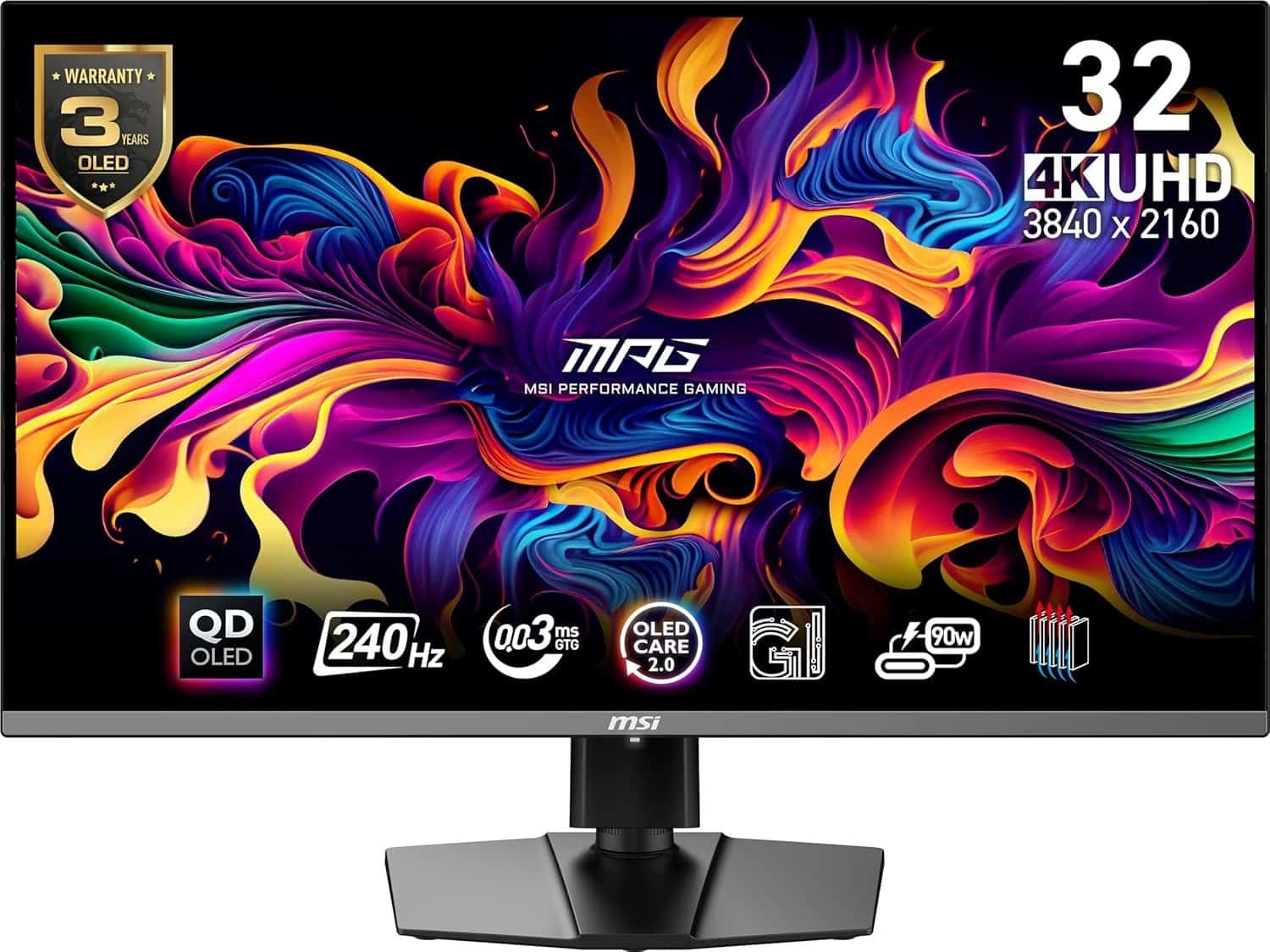
- 32-inch 4K QD-OLED panel
- Outstanding color accuracy and contrast
- Excellent gaming performance
- Suitable for both creative work and gaming
Best for Creative Professionals
BenQ SW321C PhotoVue
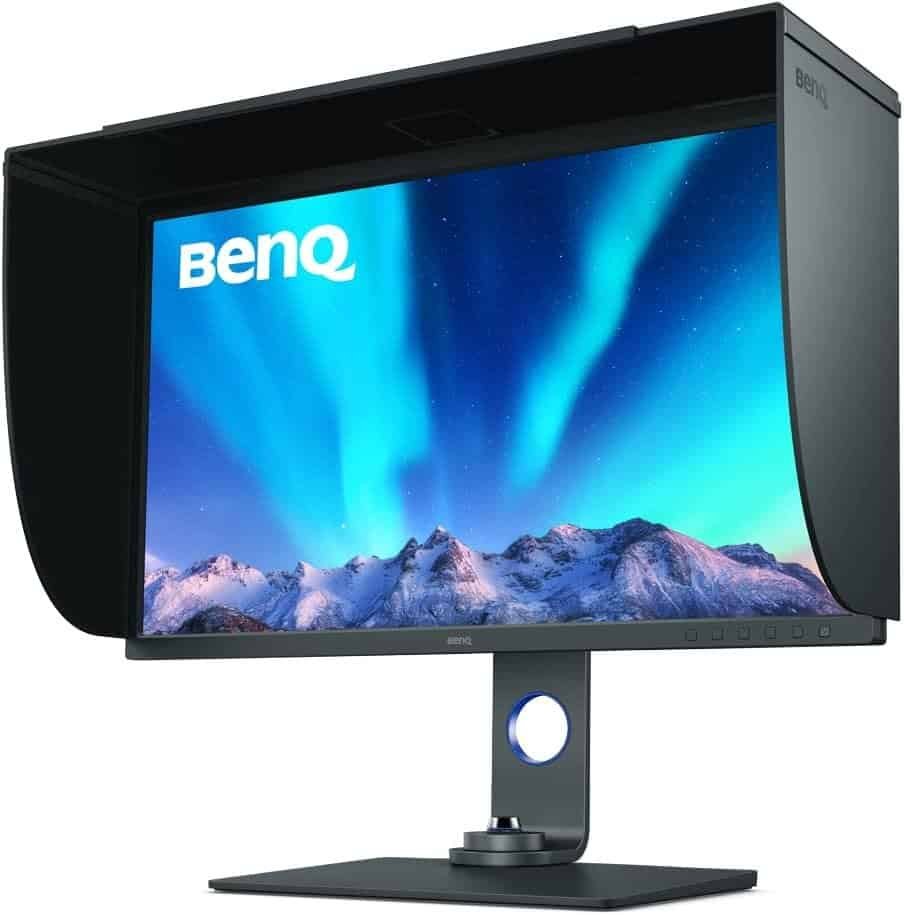
- 32-inch 4K IPS panel
- 99% Adobe RGB color coverage
- Hardware calibration support
- Designed specifically for photo and video editing
Best for Competitive Gaming
BenQ ZOWIE XL2586X+
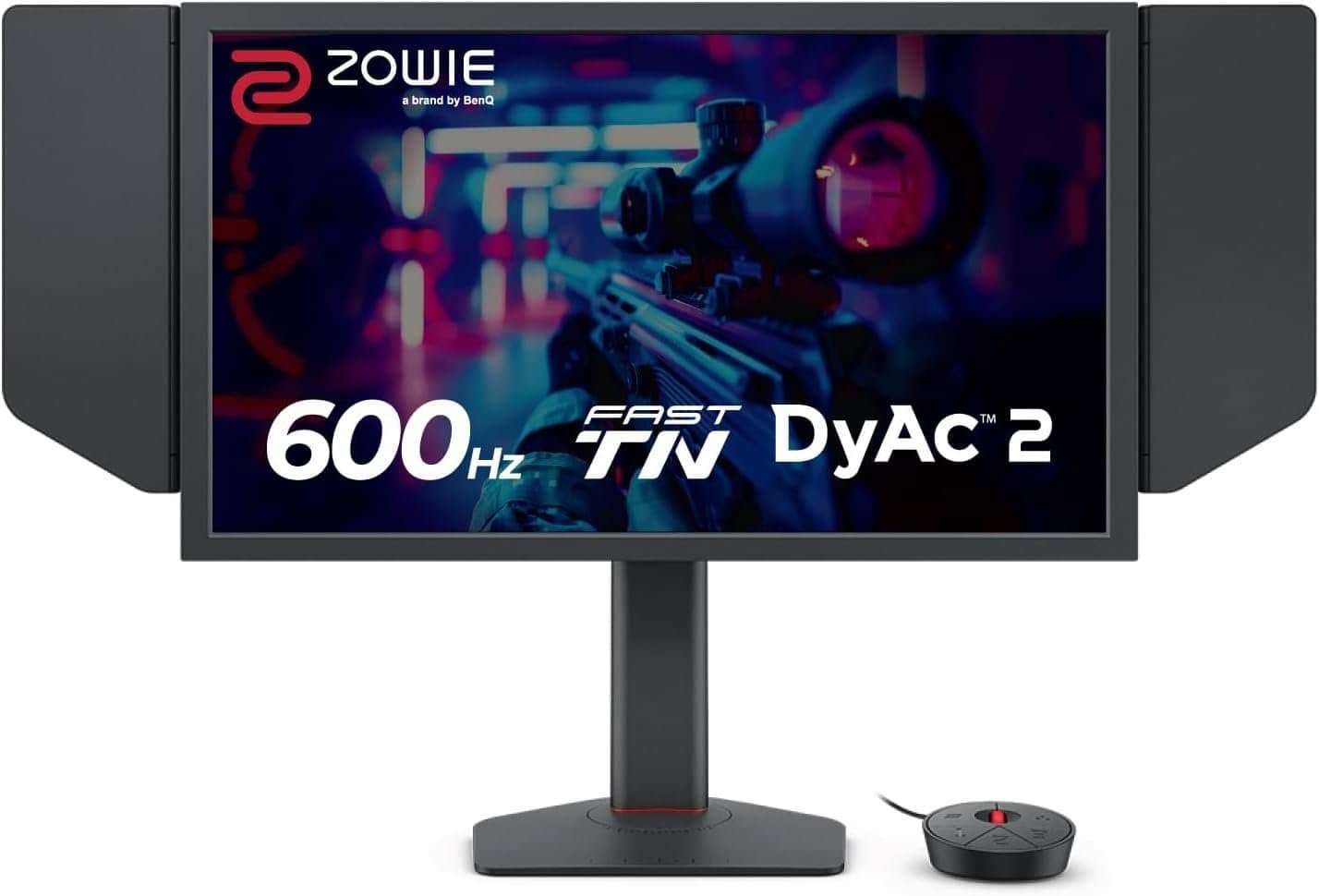
- 24.1-inch 1080/p TN panel
- Incredible 600Hz refresh rate
- DyAc 2 motion clarity technology
- Focused purely on competitive gaming performance
Best Ultrawide Monitor
Alienware AW3423DW
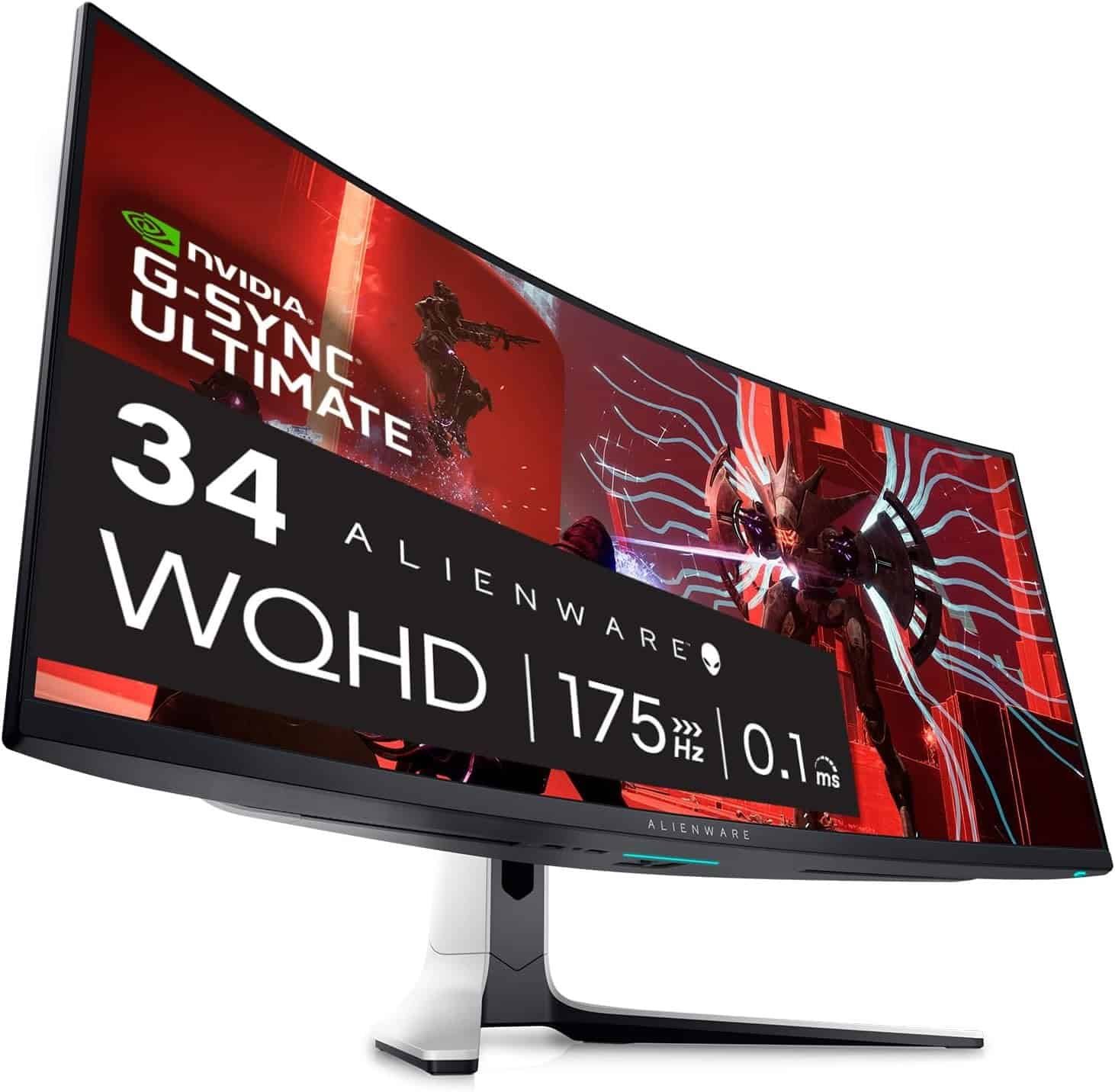
- 34-inch ultrawide QD-OLED panel
- Immersive curved design
- Excellent for both gaming and productivity
- Outstanding contrast and color performance
Best Budget Option
AOC 24G2
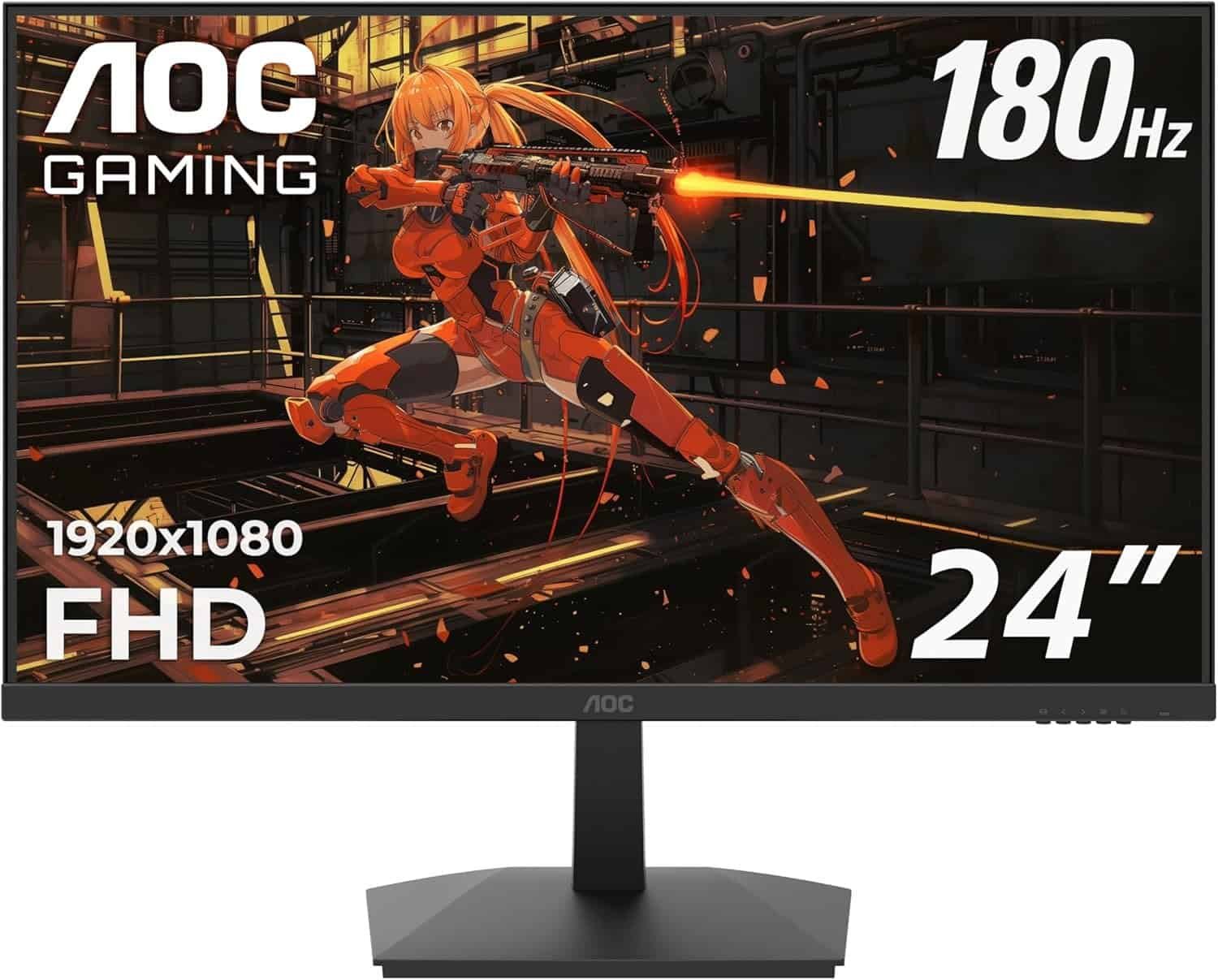
- 24-inch Full HD (1080p) IPS panel
- 144Hz refresh rate with 1ms MPRT response time
- Great color accuracy for the price
- Ideal for gamers who want both speed and visuals on a budget
Best All-Purpose Monitor
Dell U2725QE
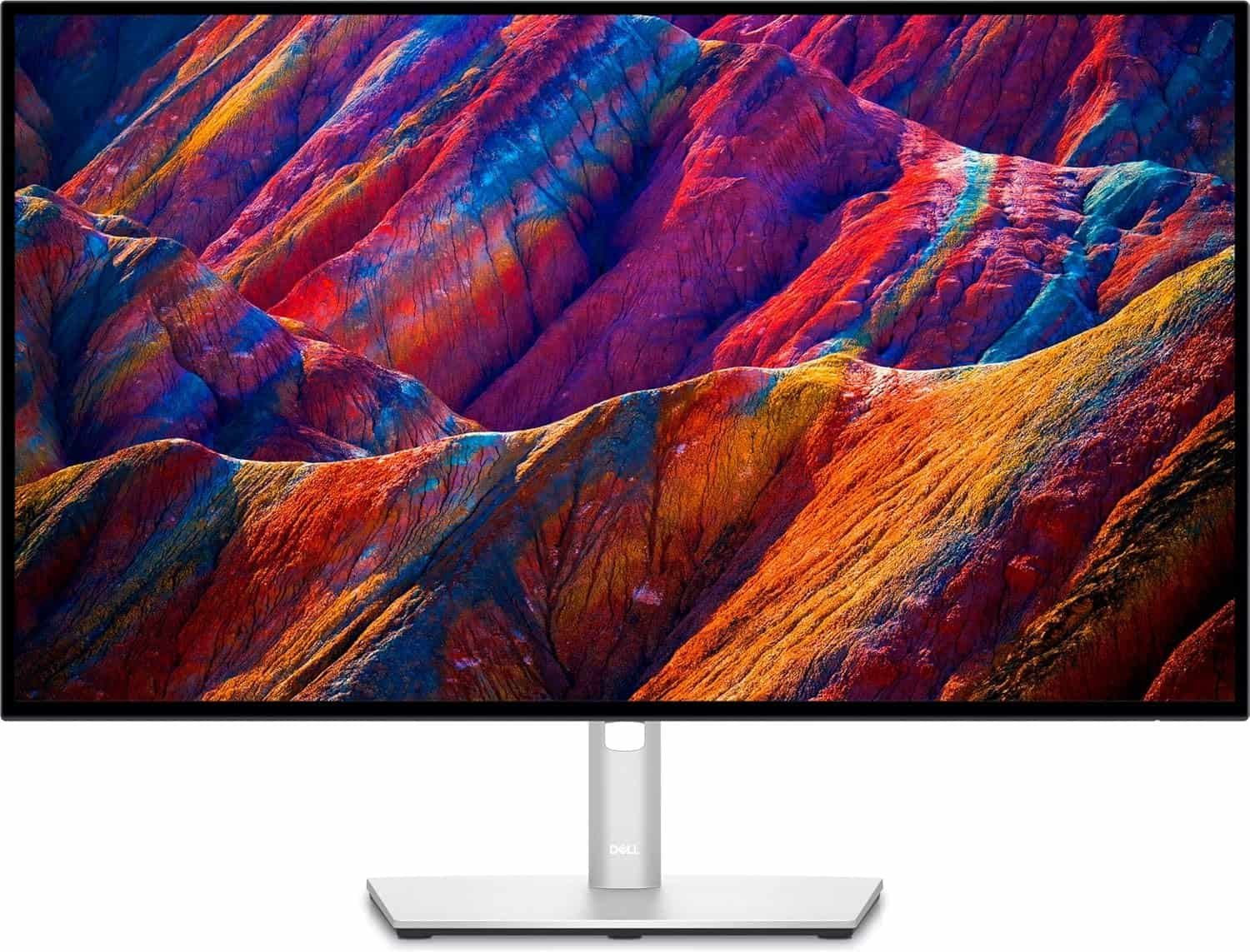
- 27-inch 4K IPS panel
- Excellent connectivity options including Thunderbolt 4
- Solid color performance
- Good for both productivity and casual gaming
Conclusion: The Display Revolution Continues
Monitor technology continues to evolve at a rapid pace. What seemed cutting-edge just a few years ago now feels outdated as refresh rates climb higher, colors get more accurate, and new technologies like QD-OLED reshape our expectations.
The good news? There’s never been a better time to buy a monitor. Whether you’re a competitive gamer needing lightning-fast response times, a creative professional demanding perfect color accuracy, or just someone who wants a better visual experience for everyday computing, today’s monitor market offers something for everyone.
Remember that the best monitor is the one that meets your specific needs—not necessarily the one with the most impressive spec sheet or highest price tag. Take the time to identify what matters most to you, and you’ll end up with a display that enhances your digital experience for years to come.
Have questions about monitors I didn’t cover? Still trying to decide between specific models? Drop a comment below, and I’ll help you navigate the sometimes confusing world of display technology.
Did you find this guide helpful? Share it with a friend who’s in the market for a new monitor!

[…] need to drop a hundred bucks to get quality sound on the go. Just like we discovered in our Best Budget Monitors for 2025 guide, the affordable tech market is booming with quality […]